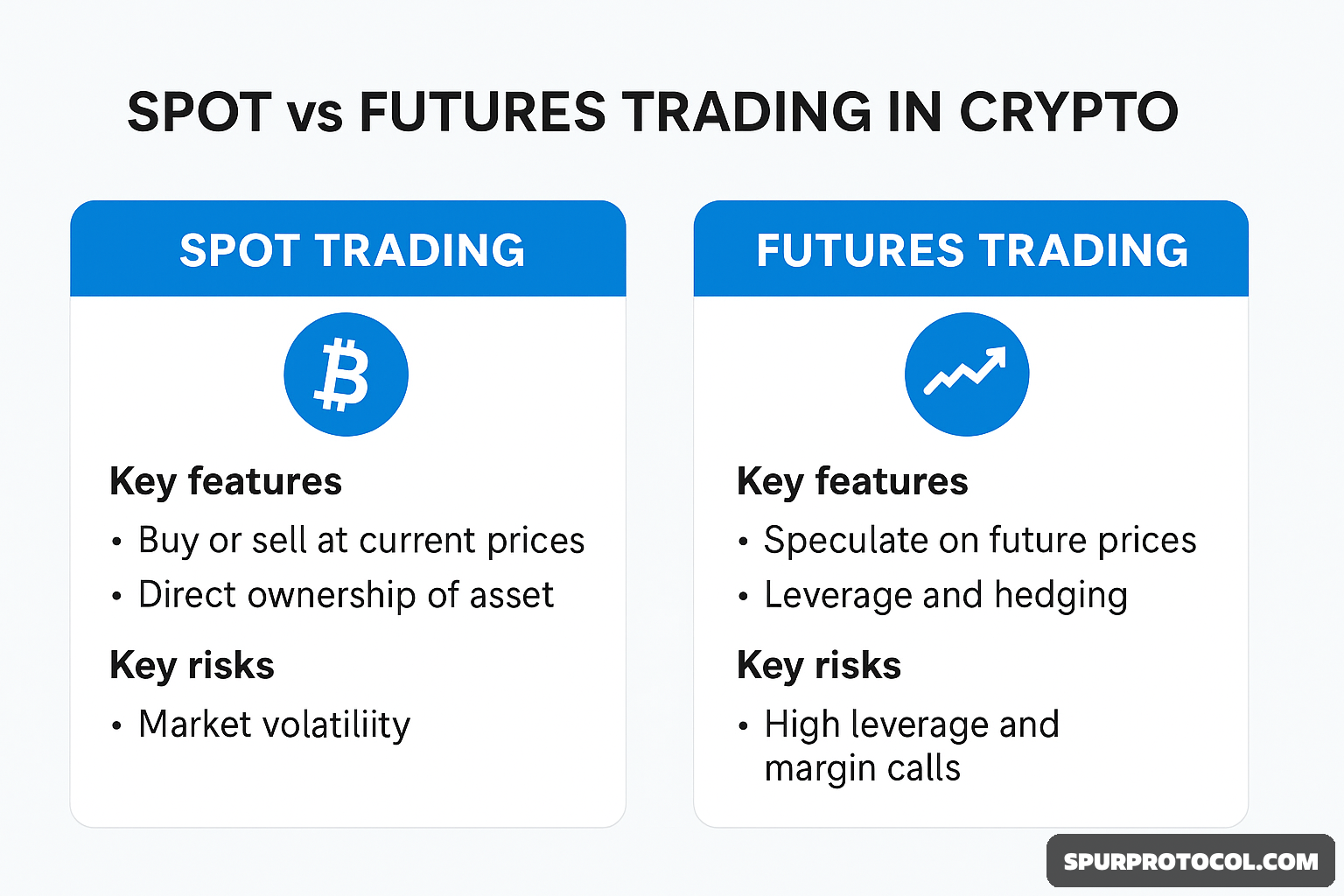Spot Vs Futures Trading In Crypto - Key Differences And Risks.
As cryptocurrency adoption expands, traders are faced with two popular approaches: spot trading and futures trading. While both offer opportunities, they operate very differently and carry distinct risks.
Go Back

🕒 4:54 AM
📅 Aug 30, 2025
✍️ By ngwapriestly
Spot Trading
Spot trading is the most straightforward method. Investors buy or sell cryptocurrencies at current market prices and take direct ownership of the asset. For example, purchasing Bitcoin on a spot exchange means you actually hold BTC in your wallet. The main advantage is simplicity: no expiries, no leverage, and limited exposure beyond the amount invested. However, spot traders are fully exposed to market volatility, and returns depend entirely on price appreciation.
Futures Trading
Futures contracts, by contrast, allow traders to speculate on future price movements without owning the underlying asset. This market often uses leverage -sometimes up to 100x-which can magnify both gains and losses. Futures also enable strategies like hedging, allowing traders to protect portfolios against price swings. But with high leverage comes liquidation risk: even small adverse moves can wipe out a position.
Key Risks
- Spot trading risk: Market volatility, but no forced liquidation.
- Futures trading risk: High leverage and margin calls, making it far riskier for inexperienced traders.
- Regulatory risk: Futures markets are more closely monitored, and rules vary by region.
Bottom Line
Spot trading is better suited for long-term investors seeking direct asset ownership, while futures appeal to experienced traders chasing short-term opportunities or hedging strategies. The choice depends on risk tolerance: spot is safer, futures are riskier but potentially more rewarding.
